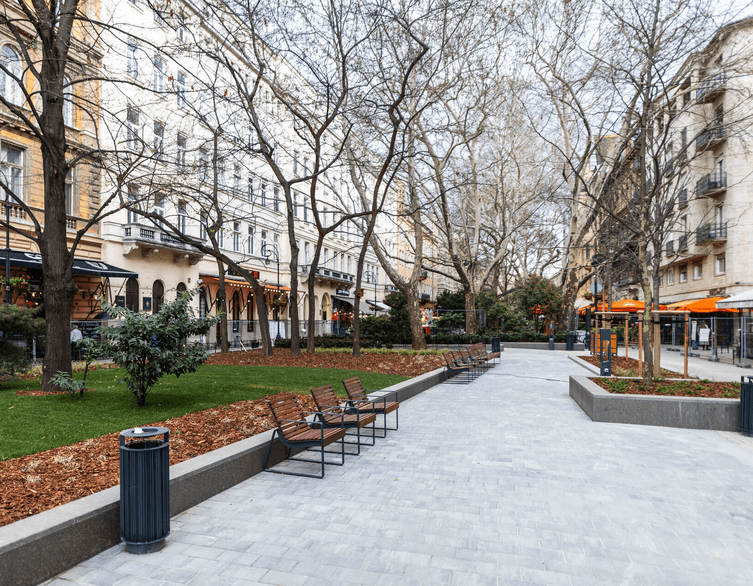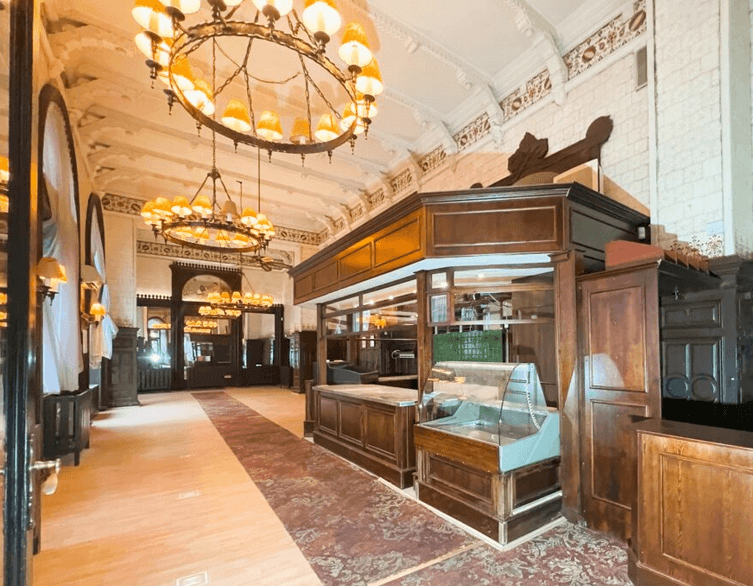Coffee Culture in Hungary: A Flavorful Journey Through History
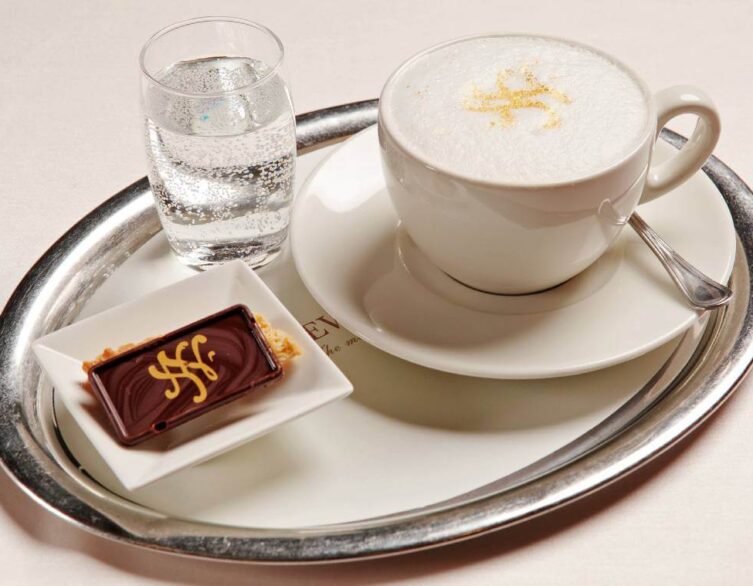
Coffee has become an integral part of Hungarian culture, with a rich history dating back to the 16th century. From the influence of Turkish coffee traditions to the vibrant coffee house scene in Budapest, Hungary has embraced the art of coffee-making and the social aspects surrounding it. In this article, we’ll explore the fascinating journey of coffee in Hungary and how it has shaped the country’s cultural landscape.
The Arrival of Coffee in Hungary
The introduction of coffee to Hungary can be traced back to the 16th century when the Ottoman Empire occupied the region. The Turks brought with them their love for coffee and their traditional methods of preparing it. This Turkish influence had a significant impact on the development of Hungary’s coffee culture.
Turkish Coffee Traditions
The Turkish coffee tradition has a long and rich history in Hungary, dating back to the 16th century when the Ottoman Empire occupied the country. During this time, the Turks brought their love for coffee and their traditional brewing methods, which had a significant influence on the development of Hungarian coffee culture.
One of the most interesting aspects of the Turkish coffee tradition in Hungary is the way it has evolved and adapted over the centuries. In the early days, coffee was primarily consumed by the Turkish occupiers and was seen as a foreign and exotic drink by the Hungarians. However, as time passed, the locals began to embrace the coffee culture and make it their own.
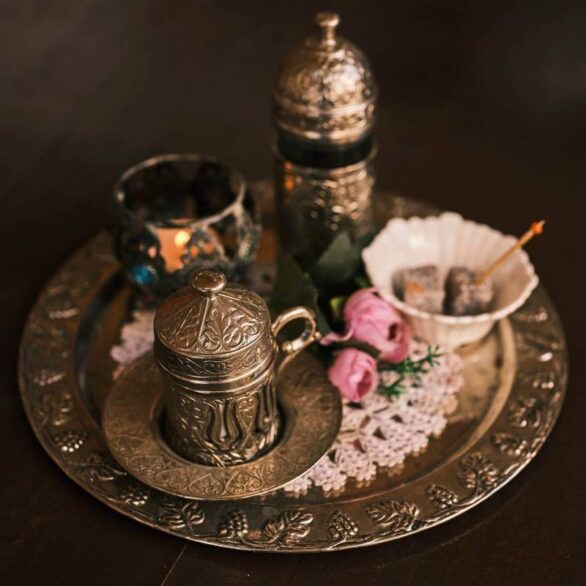
One of the most famous examples of this is the emergence of the “fekete leves” or “black soup” tradition. According to legend, during the 1680s, the Pasha of Várad invited the Hungarian prince Imre Thököly to lunch, with the intention of capturing him. Thököly, suspecting a trap, tried to leave after the meal, but a janissary stopped him, saying, “Don’t hurry, my Lord, the black soup is still to come!” The coffee was so irresistible that Thököly stayed, only to be captured and taken to the Yedikule Fortress prison in Istanbul.
The Rise of Coffee Houses in Budapest
Coffee houses have played an integral role in shaping the cultural landscape of Budapest, Hungary, for centuries. It was not until the 19th century that the coffee house culture in Hungary truly flourished. It was during this time that the first coffee houses opened their doors in Budapest and other major cities. These establishments were not merely places to enjoy a cup of coffee; they became hubs for social gatherings and cultural events. People would gather to engage in discussions, participate in artistic and literary events, and enjoy each other’s company.
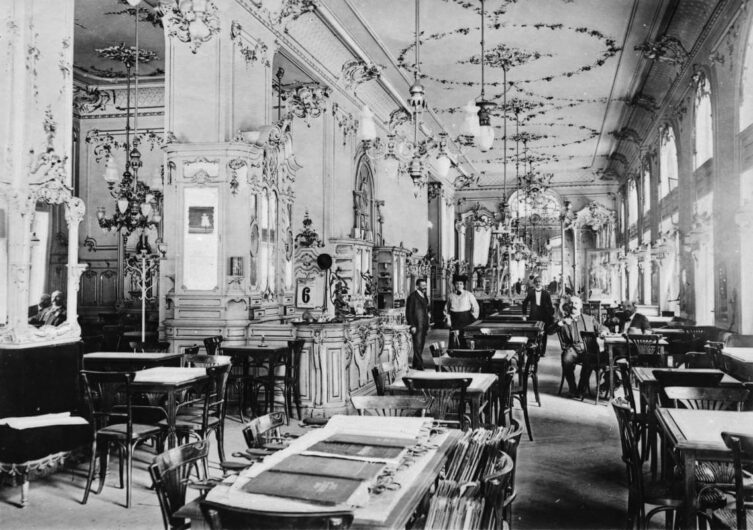
photo: Fortepan / Deutsche Fotothek / Brück und Sohn
In conclusion, the rise of coffee houses in Budapest has been a journey spanning centuries. From the introduction of coffee by the Ottomans to the cultural renaissance of coffee houses in the 19th century and the modern revival of specialty coffee, the coffee culture has shaped the social and artistic fabric of the city. As people continue to gather in cafes, engaging in conversations and savoring moments of tranquility, it is evident that the love for coffee in Hungary is here to stay.
Coffee Houses as Intellectual Hubs
In the 19th and early 20th centuries, coffee houses in Budapest played a significant role as intellectual and cultural hubs. Coffee houses played a crucial role in the artistic and literary scene of the 19th century. Many writers, poets, artists, and philosophers would meet at these establishments to share ideas and draw inspiration. The famous New York Café, for example, became the center of Hungarian literary life, where numerous significant literary groups formed, and literary journals were published.
The rise of coffee house culture in Budapest coincided with the city’s rapid modernization and urbanization during the Austro-Hungarian Empire. As the city grew and developed, so did the number of coffee houses. By the turn of the 20th century, Budapest boasted over 500 coffee houses, each with its own unique character and clientele.
One of the most famous coffee houses in Budapest was the New York Café, which opened in 1894. Located in the heart of the city, the New York Café quickly became a gathering place for writers, poets, and journalists. It was known for its opulent interior, featuring high ceilings, chandeliers, and ornate decorations. Many influential literary figures, such as Endre Ady and Zsigmond Móricz, frequented the New York Café, discussing ideas and collaborating on various projects.
Another notable coffee house was the Centrál Kávéház, which opened in 1887. The Centrál was a popular meeting spot for intellectuals, particularly those associated with the influential literary magazine Nyugat (West). Writers such as Dezső Kosztolányi and Frigyes Karinthy were regular patrons, often engaging in lively debates and discussions about literature, politics, and philosophy.
Best deals of Budapest
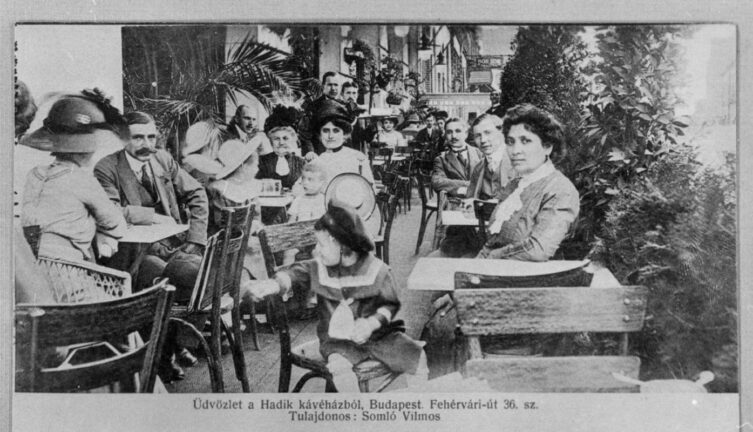
Image source: Hadik Kávéház
The Hadik Coffee House, established in 1911, was another important intellectual hub. It was frequented by avant-garde artists and writers, including members of the influential literary group known as the “Sunday Circle.” This group, which included philosopher György Lukács and sociologist Karl Mannheim, met regularly at the Hadik to discuss topics ranging from aesthetics to social theory.
Coffee houses in Budapest not only served as spaces for intellectual exchange but also played a role in shaping the city’s cultural identity. They were places where new ideas were born, artistic movements were formed, and political discussions took place. The unique atmosphere of these establishments, with their mix of stimulating conversation, caffeine, and creativity, contributed to Budapest’s reputation as a vibrant cultural capital.
Revival of Coffee Culture
The golden age of Budapest’s coffee house culture came to an end with the outbreak of World War I and the subsequent political upheavals of the 20th century. Many coffee houses closed down or were transformed into different types of establishments. Despite this, the legacy of Budapest’s coffee houses as intellectual hubs continues to be celebrated and remembered as an important part of the city’s cultural heritage.
The Second World War and the subsequent communist era had a significant impact on coffee consumption. Coffee was not always readily available, and coffee houses lost their former role as social meeting places.
However, after the fall of communism in the 1990s, the coffee culture in Hungary experienced a revival. Modern cafes, coffee houses, and coffee roasters opened, offering high-quality coffee and innovative brewing methods. People began to develop an interest in specialty coffees, and the barista profession gained popularity. No longer did people simply ask for “a coffee”; they requested espressos, cappuccinos, lattes, and even siphon coffee.
Evolving Coffee Culture in Budapest
Budapest has a long and rich history of coffee culture dating back to the 16th century when the Ottomans first introduced coffee to the region. However, in recent years, the coffee scene in the Hungarian capital has undergone a significant evolution, with a growing number of specialty coffee shops and a renewed appreciation for high-quality, artisanal coffee.
One of the most notable trends in Budapest’s coffee culture today is the rise of home baristas. More and more people are investing in professional-grade coffee makers and grinders to enjoy a superior coffee experience in the comfort of their own homes. This trend has been fueled by a desire for better quality coffee and a more personalized brewing experience.
Specialty coffee shops have been popping up all over Budapest, catering to the growing demand for high-quality, artisanal coffee. These shops often feature a wide selection of single-origin coffees, as well as alternative brewing methods like pour-over and siphon coffee. Many of these cafes also serve as community hubs, hosting events and fostering a sense of connection among coffee enthusiasts.
Budapest’s evolving coffee culture is a testament to the city’s enduring love affair with this beloved beverage. As the second most consumed drink in the world after water, coffee has earned its place as a staple in the daily lives of many Hungarians. With the continued growth of the specialty coffee scene and the increasing number of home baristas, it’s clear that Budapest’s coffee culture will continue to thrive and evolve in the years to come.
Specialty Coffee Scene in Hungary
In recent years, Budapest has experienced a vibrant emergence of specialty coffee culture. The Hungarian capital has become a hub for coffee enthusiasts, with a growing number of artisanal cafes and roasters dedicated to providing high-quality, carefully crafted coffee.
The specialty coffee movement in Hungary began to gain momentum around 2012-2013, with the opening of the first few dedicated specialty coffee shops. These pioneering establishments introduced the city to a new level of coffee appreciation, focusing on single-origin beans, lighter roasts, and alternative brewing methods.
Today, the country boasts over 50 Hungarian coffee roasters and more than a hundred cafes serving their specialty coffee. These roasters and cafes are passionate about sourcing the finest beans from around the world, often establishing direct relationships with farmers to ensure ethical and sustainable practices.
The specialty coffee scene in Budapest is characterized by a strong emphasis on quality and craftsmanship. Baristas are highly skilled and knowledgeable, often participating in national and international competitions to showcase their expertise. They take pride in preparing each cup of coffee with precision and care, using state-of-the-art equipment and techniques.
Many of the specialty coffee shops in Budapest offer a wide range of brewing methods, from the classic espresso and pour-over to more innovative techniques like siphon and cold brew. Customers can explore different flavor profiles and origins, with a focus on highlighting the unique characteristics of each coffee.
In addition to the exceptional coffee, Budapest’s specialty coffee shops often feature stylish and inviting interiors, creating a welcoming atmosphere for coffee lovers to gather and socialize. These cafes have become popular meeting spots for locals and tourists alike, serving as hubs for creative and intellectual exchange.
The growth of the specialty coffee scene in Budapest has also fostered a sense of community and collaboration among coffee professionals. Roasters and cafe owners regularly come together to share knowledge, host events, and promote the appreciation of specialty coffee to a wider audience.
As the specialty coffee movement continues to thrive in Budapest, it is clear that the city has embraced a new era of coffee culture. With its dedication to quality, innovation, and community, the specialty coffee scene in Budapest is set to continue captivating coffee enthusiasts from around the world.
Hungarians and Coffee
Today, the most popular coffee types in Hungary include espresso, cappuccino, and latte. Hungarians enjoy their coffee both at home and in cafes. The tradition of visiting coffee houses to socialize and engage in discussions continues to be an integral part of Hungarian culture. In recent years, there has been a growing trend of home baristas, with more and more people investing in premium coffee machines and grinders to enjoy the full spectrum of coffee experiences in the comfort of their own homes.
Despite the growing popularity of home brewing, Budapest’s cafes continue to thrive. Many locals still consider a freshly brewed cup of coffee to be an essential part of their daily ritual, and they are willing to visit their favorite cafes even in difficult times. During the economic crisis of 2008-2009, the annual per capita coffee consumption in Hungary remained steady at 2.6-2.5 kg, and it even increased to 2.7-2.9 kg during the pandemic in 2021-2022.
In terms of coffee preferences, Arabica is the most popular variety in Hungary. This coffee, originally from Ethiopia, is known for its fragrant, flavorful aroma. Espresso is the most sought-after coffee drink, followed by cappuccino and cafe latte. Many Hungarians enjoy these milk-based coffee beverages not only at home but also in cafes.
The emergence of new wave coffee trends has also led to a growing interest in cold brew coffee. This method involves steeping coarsely ground coffee in cold water for at least 12 hours, resulting in a less bitter, more floral, and fruity flavor profile.
The love for coffee and the cultural role of coffee houses remain strong in Hungary. Coffee consumption is no longer just about drinking a beverage; it has become an experience. With the rise of specialty coffee and the increasing number of skilled baristas, Hungarians can now enjoy a wide variety of high-quality coffee options, from classic espresso to unique brewing methods like siphon coffee.
Interesting Coffee Facts
Coffee is one of the most widely consumed beverages in the world, with a rich history and many fascinating facts surrounding it. Let’s explore some of the most interesting aspects of this beloved beverage.
Coffee Trivia
Here is a list of interesting coffee facts:
- Coffee is the second most traded commodity in the world, after oil. This shows the immense global demand and economic significance of coffee.
- The two main types of coffee beans are Arabica and Robusta. Arabica beans are known for their smooth, slightly acidic flavor and lower caffeine content, while Robusta beans have a more bitter, stronger taste and higher caffeine levels.
- Coffee was first discovered in Ethiopia, according to legend, by a goat herder named Kaldi who noticed his goats becoming energetic after eating coffee berries. This led to the cultivation and consumption of coffee in the region.
- Finland consumes the most coffee per capita in the world, with an average of 5 cups per person per day. This highlights the strong coffee culture in Nordic countries.
- The most expensive coffee in the world is Kopi Luwak, also known as civet coffee. It is made from coffee beans that have been eaten and partially digested by the Asian palm civet, a small mammal. The unique processing method contributes to its high price, which can reach around $350 per pound.
- Coffee plants are actually classified as berries, belonging to the botanical family Rubiaceae. The coffee “beans” that we roast and grind are actually the seeds found inside the coffee berries.
- In ancient Arab culture, a woman could only divorce her husband if he failed to provide her with enough coffee. This shows the historical importance and value placed on coffee in certain societies.
- Adding cream to coffee can help it stay warm up to 20% longer. The fat content in the cream acts as an insulator, slowing down the cooling process of the coffee.
- Brazil is the world’s largest producer of coffee, accounting for about 40% of the global coffee production. The country’s climate and vast agricultural lands make it ideal for growing coffee.
- Americans spend an average of $1,100 on coffee annually, which equates to around $21 per week. This demonstrates the significant role coffee plays in American daily life and consumer spending habits.
These fascinating facts showcase the rich history, cultural significance, and global impact of coffee. From its humble origins to its current status as a beloved beverage worldwide, coffee continues to captivate and bring people together.
Origins and Cultivation
Coffee plants are native to Ethiopia, where legend has it that a goat herder named Kaldi first discovered the energizing effects of coffee cherries after observing his goats’ unusual behavior. Today, coffee is grown in over 70 countries, with Brazil being the largest producer, followed by Vietnam and Colombia. Coffee plants require specific conditions to thrive, including high altitudes, moderate temperatures, and plenty of rainfall.
Two Main Species
There are two main species of coffee: Arabica and Robusta. Arabica beans, which originated in Ethiopia, are known for their smooth, complex flavor and lower caffeine content. Robusta beans, native to sub-Saharan Africa, have a stronger, more bitter taste and contain nearly twice as much caffeine as Arabica. The majority of coffee consumed worldwide is a blend of both species.
Processing and Roasting
After coffee cherries are harvested, the beans are extracted and processed using either the dry or wet method. The dry method involves sun-drying the cherries before removing the beans, while the wet method uses water to separate the beans from the fruit. Once processed, the beans are roasted to varying degrees, ranging from light to dark, which significantly influences the final flavor profile.
Health Benefits
Moderate coffee consumption has been linked to several potential health benefits. Studies suggest that coffee may lower the risk of type 2 diabetes, Parkinson’s disease, liver disease, and certain types of cancer. Coffee is also a rich source of antioxidants, which help protect cells from damage caused by free radicals. However, excessive consumption can lead to negative effects, such as anxiety, insomnia, and increased heart rate.
Global Economic Impact
Coffee is not only a popular beverage but also a significant global commodity. It is the second most traded commodity in the world, after oil. The coffee industry employs millions of people worldwide, from farmers to baristas, and contributes to the economies of many developing countries.
Unique Preparations
While espresso-based drinks like cappuccinos and lattes are popular in many parts of the world, there are also unique coffee preparations specific to certain cultures. For example, in Vietnam, coffee is often served with sweetened condensed milk, while in Ethiopia, a traditional coffee ceremony involves roasting, grinding, and brewing the beans in front of guests.
In conclusion, coffee is a fascinating beverage with a rich history, diverse cultivation and processing methods, and significant global economic impact. From its potential health benefits to the unique cultural traditions surrounding its preparation and consumption, there is always something new to discover about this beloved beverage.
Conclusion
From the influence of Turkish coffee traditions to the vibrant specialty coffee scene, Hungary’s coffee culture has undergone a remarkable journey. Coffee has become deeply ingrained in the country’s social fabric, serving as a catalyst for connection, creativity, and cultural exchange. As you sip your next cup of coffee in Hungary, take a moment to appreciate the rich history and the passion that goes into every brew.
Image source: New York Cafe Budapest
Related news





















